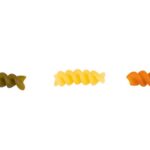How to Purify Water while Backpacking
Backpacking adventures often lead you to breathtaking landscapes, stunning vistas, and the thrill of the wild. However, one critical aspect of outdoor exploration remains paramount—access to safe drinking water. Water sources can be abundant in nature, but they are often contaminated with pathogens, sediments, or chemicals. Understanding how to purify water while backpacking is essential for maintaining your health and ensuring an enjoyable experience.
Understanding Contaminants
Before diving into purification methods, it’s vital to recognize potential contaminants in natural water sources. Bacteria, viruses, and protozoa are the most common pathogens lurking in lakes, rivers, and streams. While some microorganisms may not pose an immediate threat to the average hiker, others—such as Giardia and cryptosporidium—can lead to severe gastrointestinal issues. Additionally, water may carry harmful chemicals from industrial runoff or agricultural activities, although these are less common in remote areas.
Boiling Water
Boiling is one of the simplest and most effective methods for purifying water while backpacking. It requires no special equipment beyond a heat source and a container, making it accessible for most backpackers. To effectively kill pathogens, bring water to a rolling boil for at least one minute (or three minutes at high altitudes). This method is particularly useful when you have a reliable camp stove or can build a fire. However, boiling does not remove chemical contaminants, so it’s best used with water from high-quality sources.
Water Filters
Water filters are a popular choice among backpackers due to their efficiency and ease of use. They typically come in two forms: pump filters and gravity filters. Pump filters allow you to manually pump water through a filter, removing pathogens and sediments. Gravity filters, on the other hand, use gravity to pull water through the filter, enabling a hands-free approach. When selecting a filter, look for one with a pore size of 0.2 microns or smaller to ensure it effectively removes bacteria and protozoa. Many filters can also be backflushed for easy cleaning and extended use.
Chemical Treatments
Chemical purification methods, such as chlorine or iodine tablets, offer lightweight and compact solutions for backpackers. These tablets are easy to carry and typically require only a short wait time before the water is safe to drink. While effective against bacteria and viruses, they may take longer to kill protozoa like Giardia. Additionally, some people may be sensitive to the taste of chlorine or iodine, so it’s wise to have an alternative method on hand. Remember to follow the manufacturer’s instructions for dosage and wait times to ensure water safety.
UV Light Purification
Ultraviolet (UV) light purifiers are another innovative option for purifying water while backpacking. These compact devices use UV light to neutralize bacteria, viruses, and protozoa in just a few minutes. Simply submerge the UV light in the water, switch it on, and let it do its work. UV purifiers are lightweight and highly effective, but they do require batteries or a power source. They are also ineffective against chemical contaminants, so consider using them in conjunction with other purification methods.
Alternative Methods
If you find yourself in a pinch without standard purification tools, there are a few alternative methods you might consider. One such technique is to let sediment settle to the bottom of a container, followed by filtering the clear water through a cloth or bandana. While this method won’t eliminate pathogens, it can help improve taste and clarity. Another option is solar disinfection, which involves filling clear plastic bottles with water and leaving them in direct sunlight for several hours. This method can be effective against some bacteria and viruses but may not eliminate all pathogens.
Staying Safe and Hydrated
Ensuring that your water is safe to drink is essential for a successful backpacking trip. Whatever purification method you choose, make sure to stay hydrated throughout your adventure. Dehydration can lead to fatigue, decreased performance, and even serious health risks. With the right knowledge and tools, you can confidently purify water in the wilderness and enjoy the great outdoors without worry.
Final Thoughts on Water Purification
The key to successful backpacking lies in preparation and knowledge. Familiarizing yourself with water purification methods not only protects your health but also enhances your overall experience in nature. Whether you choose boiling, filtering, chemical treatments, or UV purification, ensure you have a backup plan. With safe drinking water at your disposal, you can focus on exploring, enjoying the scenery, and making lasting memories in the wild.


